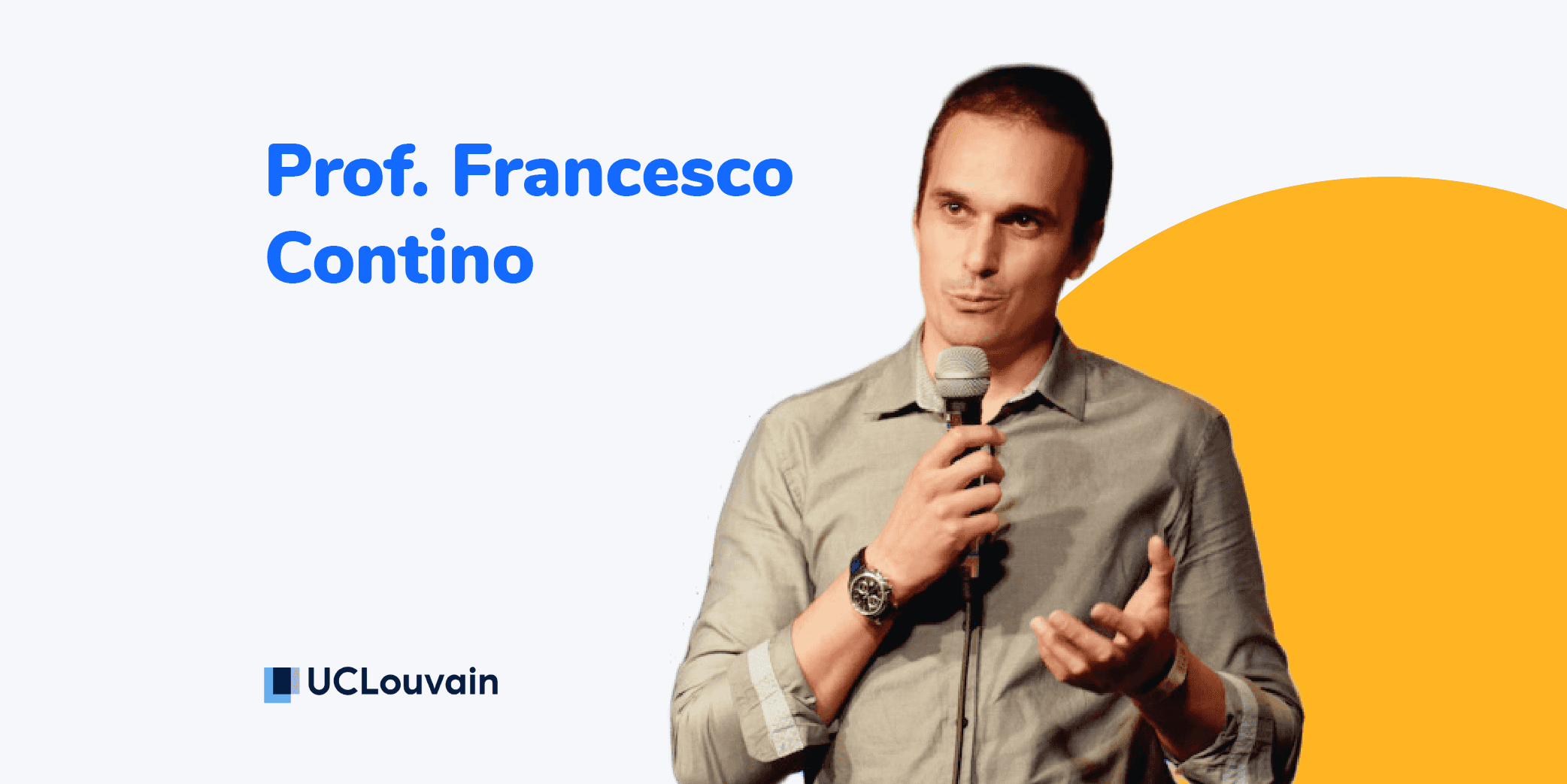
American summer tour! Wooclap will be at Anthology Together 2025
Come say hi at booth 301 from July 14th to July 16th in Las Vegas, Nevada
Building a Wooclap course for active learning
10.06.2020 • 4 minutes

Using Wooclap to build « a course of which the student is the hero »
Francesco Contino, professor of engineering and specialist in thermodynamics at the Catholic University of Leuven, shares his experience with Wooclap.
Context
- Institution: Catholic University of Louvain
- Field: engineering, set in a course on energy for non-specialists
- Audience: 100+ third year management students
What if students could decide, at least in part, what they are going to learn? This is the challenge that Francesco Contino has set for himself. In an effort to involve the students more and make them actors of their learning, this engineering professor, who specialises in thermodynamics at the Catholic University of Louvain, used Wooclap to build courses “in which you are the hero”.
Implementation of the concept
Francesco Contino used Wooclap to ask his students to choose the way the rest of the course was going to take place. With an average of one poll per lecture, he asked them to cast a vote on several matters:
- The language of the course
During the introductory lecture, professor Contino asked his students: « Would you like me to continue the course in French or English? » With this question, which caught the students off-guard, he wanted to challenge his students and revitalise his course. The amused reactions in the classroom confirmed his gamble was successful. The rest of the course ended up taking place in French, but with English slides to accustom the students to an international work environment. - The order of the chapters
The students chose the order in which the different topics (transport, gas turbine, biofuels…) were going to be addressed. The aim was to make it easier for them to get into each subject, starting from those that interest them most. - The concepts to study in-depth
Beyond the basic and essential knowledge, the teacher let his students decide which subjects they should discuss more in-depth. Solar or wind energy? Biofuels or electric cars? - Organising a debate
Some students wanted to invite experts to discuss the cost-effectiveness of renewable energy. The teacher put this proposal to a vote and the majority chose to organise the debate.
The teacher’s challenge
- More work in advance
Preparing the course takes more time. It is particularly essential to ensure that, whatever the students choose, the progression of the course remains logical. This requires clearly identifying the prerequisites and providing different times when they can be covered, so that students have the knowledge they need to understand the course at all times.
- A necessary adjustment
The course must be readjusted from week to week, by reorganising its general trajectory or by detailing certain aspects depending on the students’ choices. « Organising this type of course is certainly not the easiest solution, but isn’t this job done out of passion and to train the students as well as possible? »
The results
The evaluation is qualitative, not quantitative, but it shows educational benefits measured in several ways:
- Good participation by students, the vast majority of whom took part in the game by voting. Allowing them to vote by SMS text message is a convenient alternative in case of technical or wifi problems.
- An audience engaged in learning: this behaviour was felt during the lessons through non-verbal reactions (smiles, sustained attention, participation in voting, etc.).
- Good exam results.
- Students satisfied with the course, and more particularly with the teaching method, according to the evaluation surveys.
Having the opportunity to decide increases motivation, and therefore commitment to learning.
Prof. Francesco Contino
Perspectives : how to build on this experience?
- Individualise the course
In addition to the course, Francesco Contino plans to produce explanatory videos and provide texts and exercises from which students can choose. The idea is to enable them to enrich their scientific knowledge, as they will be called upon to work in the field of energy without being specialists themselves.
- How can you transpose this?
In other courses, students could choose between different exercises to complete, for example, or between several cases which require a practical application of the theory. However, according to Francesco Contino, « a single tool is never the solution to everything. The best pedagogy is to add diversity to lectures. »
Distance learning with Wooclap
Find here all our resources to use Wooclap in a distance learning set-up.
Writer

Julie Lemaire
Content Marketing Lead @Wooclap. As a student of language with a passion for education and a thirst for knowledge, I am currently learning to parlare italiano.
Subject
A monthly summary of our product updates and our latest published content, directly in your inbox.



